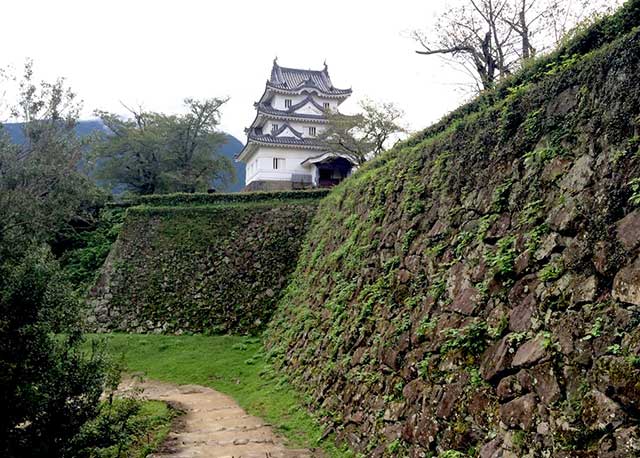
Uwajima Castle, located in Uwajima City, Ehime Prefecture, Shikoku, is one of the 12 remaining Japanese castles with an original keep. Known for its small size, Uwajima Castle is relatively difficult to access, which means it is less frequented by tourists.
The castle's history dates back to 941 when initial fortifications were built on the hill. In 1236, these were expanded, and the castle was known as Marukushi Castle. The Chosokabe clan later controlled it, facing attacks from the powerful Otomo clan. In 1585, Toyotomi Hideyoshi seized the castle during his campaign to conquer Shikoku, placing his retainers in charge. The Todo clan was awarded the domain in 1595, leading to a major restoration by the renowned castle architect, Todo Takatora. The castle was renamed Uwajima in 1601, just before the Todo clan was transferred to Imabari Castle, and the Tomita clan took over.
In 1615, Date Hidemune, from the Sendai-based Date clan, was given control of the castle, with his descendants ruling until the end of the Edo period. While the basic layout of the castle remains from Takatora’s era, the Date clan completed the stone walls, gates, and yagura. The keep, built in the 1670s and designated an Important Cultural Property, is one of the smallest in Japan. Its entranceway roofing was added around 1850.
The keep's base, the Tenshu-dai, features precisely cut stones with a narrow ledge around the top, known as an Inu-michi or "Dog’s Walk." This design was due to the erosion of the softer natural stone beneath, necessitating a stronger stone cap.
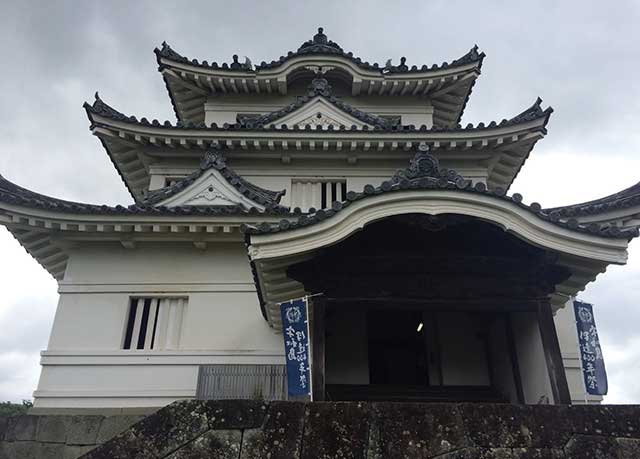
Inside the keep, the third floor houses a design model from the early Edo period used for construction and repairs. Unique to Uwajima and Himeji castles are the long, thin ventilation windows on this floor, designed to vent smoke from matchlock guns. However, the keep's design hindered defensive capabilities, with the triangular roof features limiting window gun firing access and range.
Most visitors enter from the gate at the bottom of the hill, originally the main gate of the Kori clan residence. The main castle gate, Nobori-Tachi-Mon, is on the mountain's opposite side. This old Yakui-Mon gate, the largest and oldest in Japan, was built between 1596 and 1615. Unlike the typical Korai-Mon gates, this rare gate lacks reinforcing beams and a U-shaped roof.
Historically, the bottom of the hill met the ocean, providing natural protection and allowing ships to enter the castle. However, land reclamation projects since the Edo period have left the castle inland.
Uwajima Castle was abandoned in 1871, with most structures demolished by 1900. The Ote Mon, the main gate, was destroyed during WWII bombing. In 1950, the castle was designated an Important Cultural Property. Besides the keep and stone walls, the remaining Yamazato Kura, built in 1845 and relocated in 1966, serves as a simple museum.
See also
-
Okayama Castle
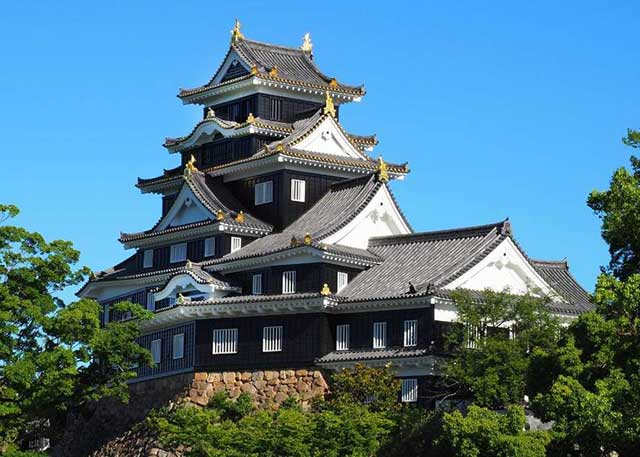
According to a number of accounts, the earliest fortifications on the site of present-day Okayama Castle appeared as early as the 14th century and were built by the Nawa clan. The Asahigawa River was used as a natural defensive barrier, protecting one side of the fortifications.
In the early 16th century, the Kanamitsu clan constructed a new castle here, which at the time was known as Ishiyama. In 1573, it came under the control of the Ukita clan, after which Ukita Naoie (1529–1582) launched large-scale reconstruction efforts. He did not live to see the work completed, and construction was continued by his son Hideie. -
Nagahama Castle
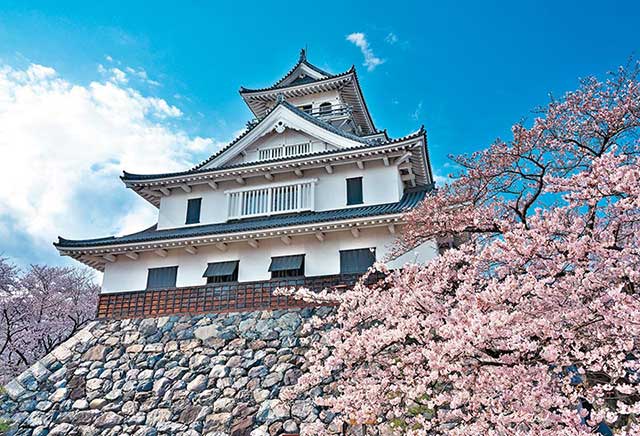
Hashiba, later known as Toyotomi Hideyoshi, received Odani Castle and the surrounding lands from Oda Nobunaga after the defeat of the Azai clan. However, Odani Castle was located high in the mountains, which made it poorly suited for the effective administration of the territory. For this reason, in 1575 Hideyoshi began constructing a new castle in the village of Imahama on the shore of Lake Biwa. Taking the character naga from Nobunaga’s name, he renamed both the village and the new castle Nagahama.
-
Kokura Castle
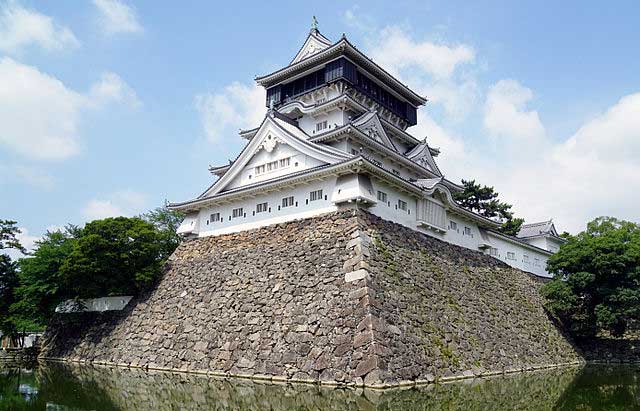
Kokura Castle is traditionally considered to have been founded by Hosokawa Tadaoki (1563–1645), although by the time the Hosokawa clan came to control these lands, the fortification had already existed since at least 1569 and was most likely built by members of the Mori clan.
-
Ikeda Castle
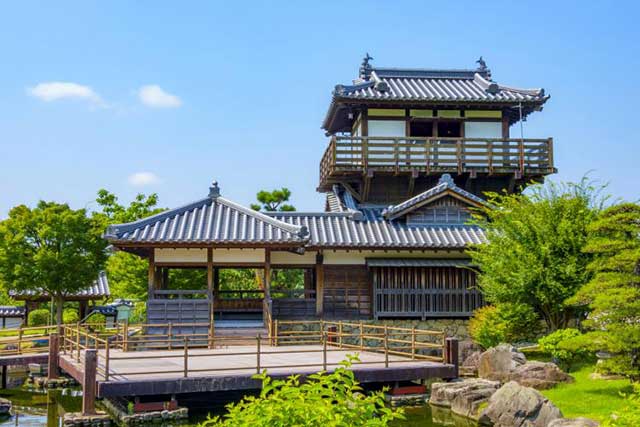
In 1334, Ikeda Noriyoshi built a small fort on this site, which over time was repeatedly expanded and rebuilt. During the Ōnin War of 1467–1477, the Ikeda clan supported the Western Coalition. As a result, Ikeda Castle was attacked and captured by the forces of the Eastern Coalition, but it was soon recaptured, allowing it to avoid serious destruction.
-
Aizu-Wakamatsu Castle
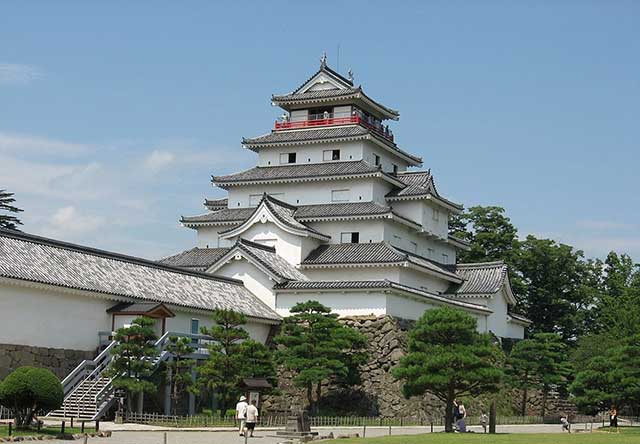
Aizu-Wakamatsu is the most powerful and at the same time the oldest castle in the Tōhoku region in the north of Honshu Island. Its history begins in the 14th century and is closely connected with the Ashina clan, whose members claimed descent from the legendary Taira family.
-
Maruoka Castle
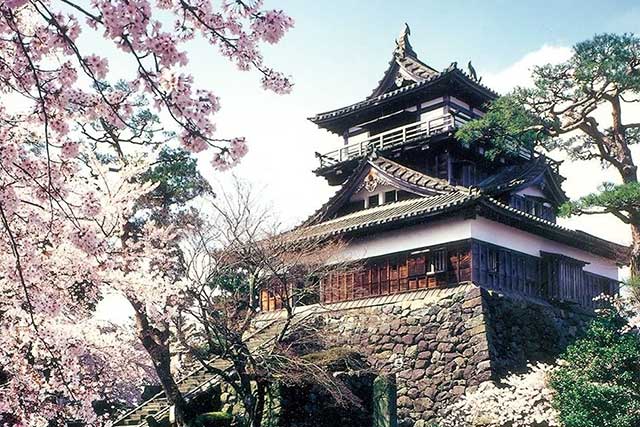
Maruoka Castle is located in the central part of the former city of Maruoka, which is now part of the city of Sakai. This area lies in the northeastern part of Fukui Prefecture. The castle was built on the bank of the Kuzuryu River, on the side opposite Fukui City, which once served as the administrative center of the former Echizen Province. Thanks to its location, Maruoka held significant strategic importance, as it controlled two major routes at once: the Hokurikudo highway leading from Kaga Province and the Mino Kaido road connecting these lands with Mino Province.
-
Marugame Castle
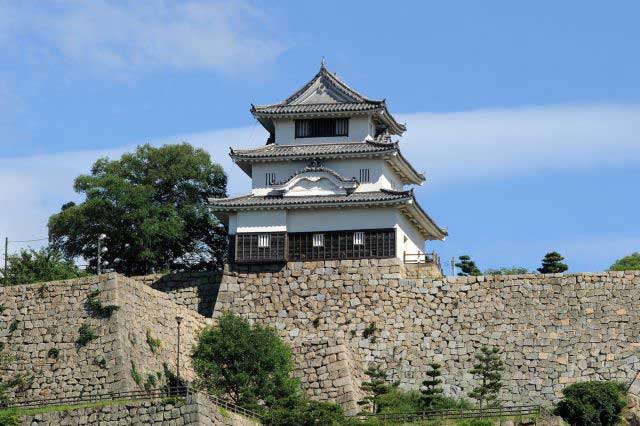
Marugame is part of the so-called “Authentic Dozen,” a group of twelve castles whose donjons have survived to the present day without major reconstructions since the Edo period.
-
Iyo Matsuyama Castle
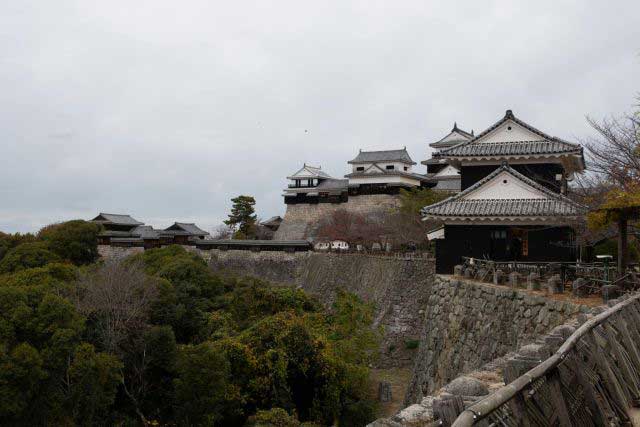
Historically, the center of Iyo Province—corresponding to today’s Ehime Prefecture on the island of Shikoku—was the city of Imabari, while the Matsuyama area was regarded as an agricultural hinterland with broad plains and low hills. During the Muromachi period, the central part of the province was governed by the Kano clan from Yuzuki Castle. With the onset of the Sengoku period, however, this clan lost its former influence and was forced to survive in the shadow of the more powerful Mori and Chōsokabe clans. After Toyotomi Hideyoshi’s forces conquered Shikoku in 1587, the northern part of Iyo Province was granted to Fukushima Masanori, one of the so-called “Seven Spears of Shizugatake.” In 1595, Masanori was transferred to Kiyosu Castle, and the lands around Matsuyama were given to another of the Seven Spears, Katō Yoshiaki, who received Masaki Castle and an income of 60,000 koku of rice.

